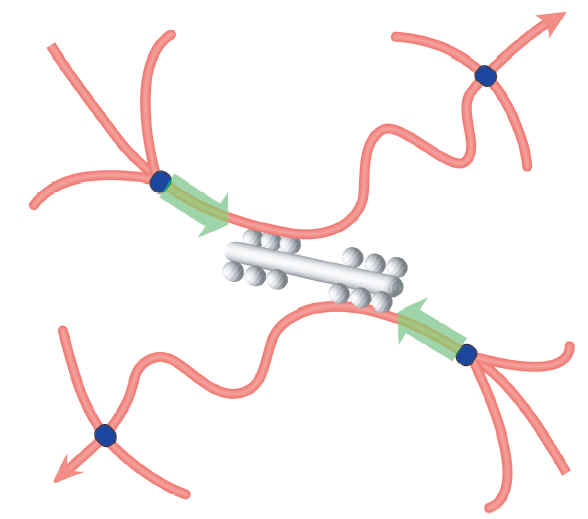





|
|
A model cytoskeleton shows non-equilibrium fluctuations and
100-fold stiffening
 Cells
both actively generate and sensitively react to forces through their mechanical
framework, the cytoskeleton, which is a nonequilibrium composite material
including polymers and motor proteins. We study the dynamics and mechanical
properties of a simple model cytoskeleton and show that stresses arising from
motor activity control the network mechanics, increasing stiffness by a factor
of nearly 100 and qualitatively changing the viscoelastic response of the
network. We present a quantitative theoretical model connecting the large-scale
properties of this active gel to molecular force generation. Cells
both actively generate and sensitively react to forces through their mechanical
framework, the cytoskeleton, which is a nonequilibrium composite material
including polymers and motor proteins. We study the dynamics and mechanical
properties of a simple model cytoskeleton and show that stresses arising from
motor activity control the network mechanics, increasing stiffness by a factor
of nearly 100 and qualitatively changing the viscoelastic response of the
network. We present a quantitative theoretical model connecting the large-scale
properties of this active gel to molecular force generation.
|

